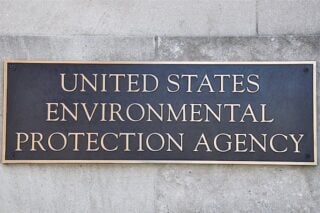Environmental Protection Agency (EPA) Administrator Scott Pruitt has promised to clean up decades-old Superfund sites, even as he is overseeing the rollback of federal environmental regulations against pollution.
“I am making it a priority to ensure contaminated sites get cleaned up. We will be more hands-on to ensure proper oversight and attention to the Superfund program at the highest levels of the agency, and to create consistency across states,” said Pruitt.
In the early days as head of the EPA, Pruitt has tried to block or delay legislation from the Obama era decreasing toxic pollution from coal-fired power plants and fossil-fuel production. He’s also questioned the science of man-made carbon emissions being the primary cause of global warming.
Yet Superfund efforts are the EPA’s “rightful place as the agency’s core mission,” according to Pruitt. He has directed his regional chiefs to increase cleanup efforts despite the 30% decrease in Superfund annual spending in President Trump’s proposed 2018 budget.
“We are looking at ways to be more efficient with taxpayer resources, and are thinking through creative and efficient ways to get these sites cleaned up,” said EPA spokeswoman Liz Bowman. She believes Pruitt will help the EPA to do more while spending less.
Although polluters are attempted to be fined for clean up by the EPA, it usually falls on taxpayers. Bankruptcy and corporate spinoffs usually cause this to happen.
Today’s Superfund budget is around 50% less than what it was in the 1990s. Most of the funds were used in seven states with high industrialization. All money goes toward majorly contaminated areas with asbestos, lead, dioxin, and radioactive materials.
Superfund sites with asbestos exposed many American workers across a variety of industries throughout history. As a result, these workers are now at risk to develop mesothelioma cancer.
According to mesothelioma survivor Heather Von St. James, with cuts to the EPA, the asbestos laws and regulations that have been put in place could disappear.
“Asbestos is already loosely regulated, and despite thoughts that mesothelioma cases peaked, the opposite is true. According to the Centers for Disease Control, mesothelioma cases rose instead of fell,” said St. James.
“When I know that this disease is preventable, that simply keeping exposure from happening can keep people from getting sick, it boggles my mind that more isn’t done to either ban or keep this substance from killing more people,” stated St. James.





